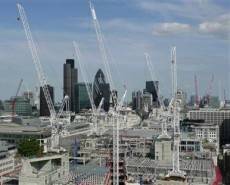November 8, 2013
Latest Insight newsletter is now available to view online
In the latest issue of the Insight newsletter available to view online; Smartglasses look set to become the next Bring Your Own Device (BYOD); office construction in the City of London higher than it has been for five years and the winners of a competition to uncover the “Workplace of the Future” are announced. We’ve an exclusive interview with journalist and urbanist Greg Lindsay, a key speaker at the Worktech 13 conference, along with columnist Philip Ross who explains why data will transform the role of workplace. Debra Ward, Chair of Women in FM questions why companies choose not to ensure gender balance in senior positions and Pam Loch offers advice to managers on what to do when a social media fixation threatens staff productivity.























